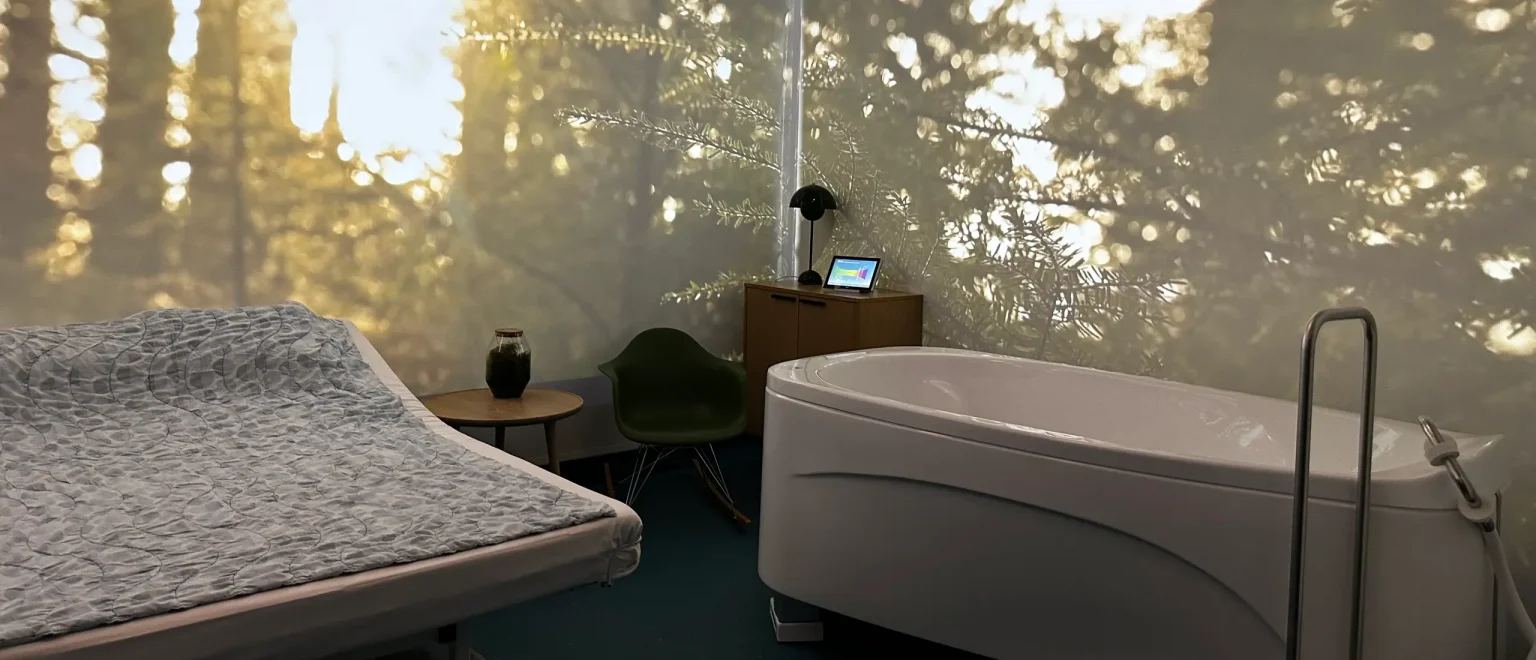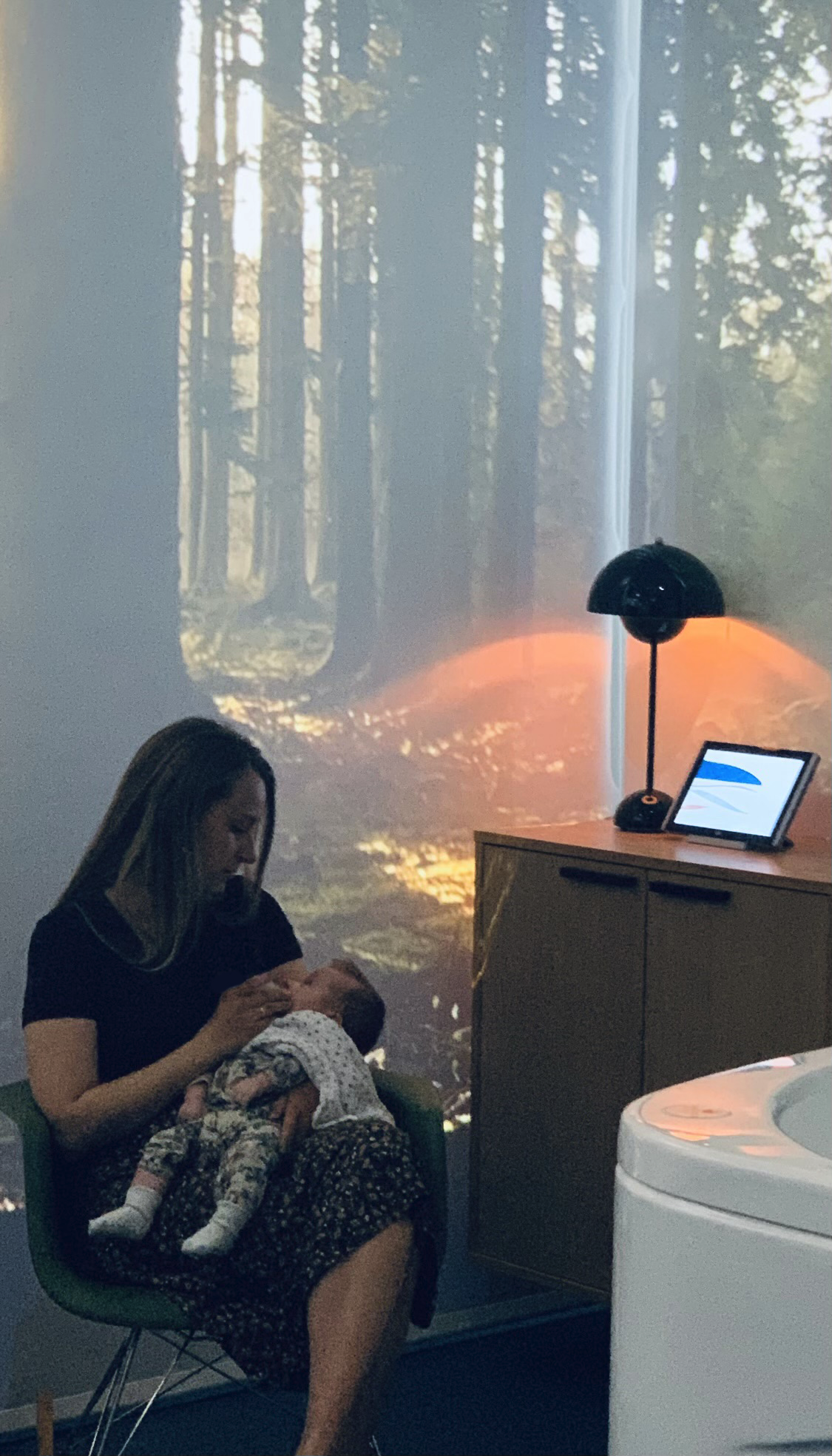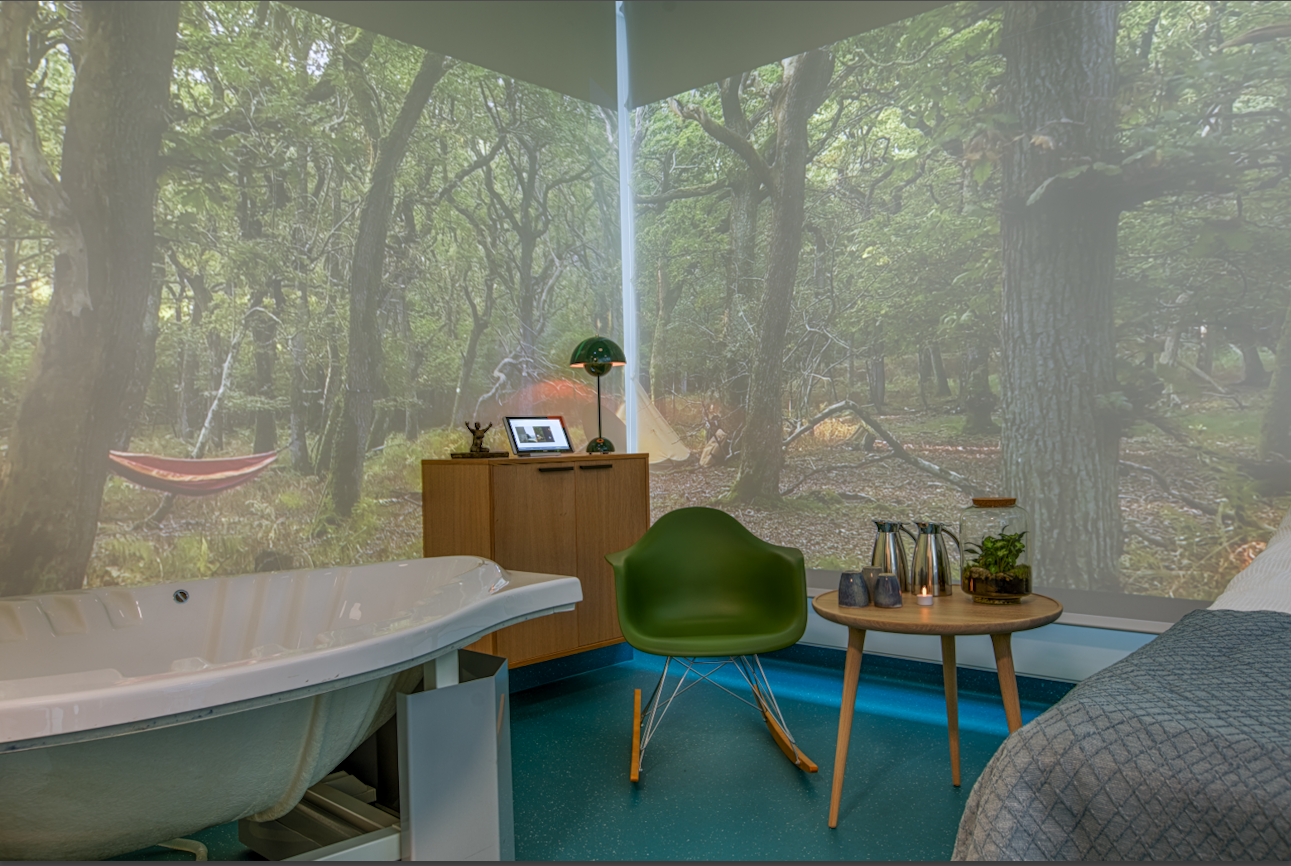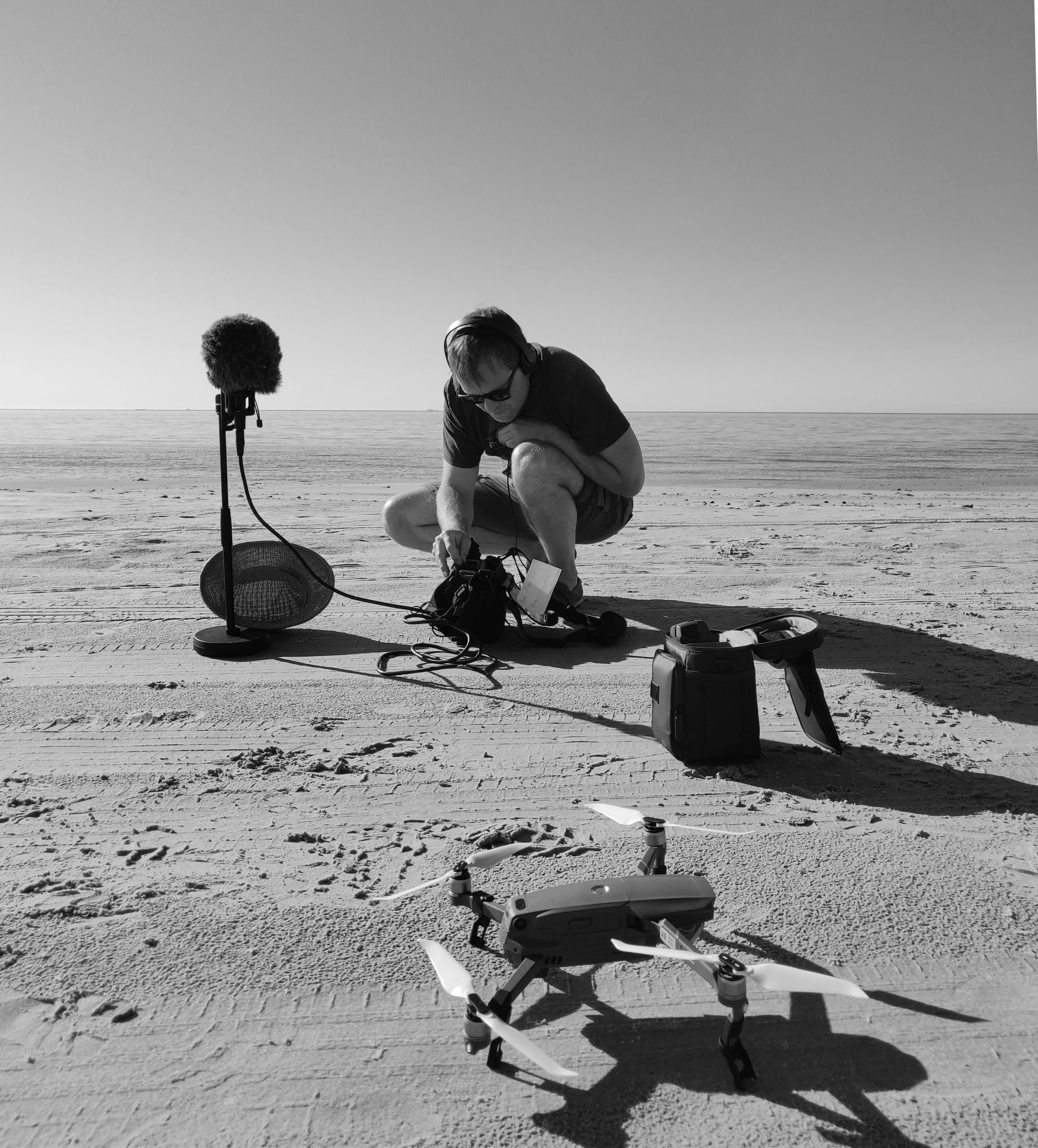
In the artwork “Nordjyske stemninger” (‘Nordic Moods’) nature from North Jutland has been brought into the delivery rooms in North Jutland Regional Hospital in Hjørring (RHN). The sensory artwork is site-specific and represents the nature moods from the local area and home of the soon-to-be mothers and fathers. The delivery rooms have proven to support natural childbirth, and through the familiar soundscapes, create a foundation of calm and harmony in the rooms. Studies also suggest a significantly increased job satisfaction and a strengthened sense of appreciation.
In 2021 four specially designed sensory delivery rooms with integrated site-specific video, lighting, and sound artworks was designed and implemented. The goal was to establish a dynamic space where the couple can adjust the mood during childbirth, while the artwork recedes into the background, allowing the social relationship between parents and staff to take center stage. The artworks should form a cohesive whole, fostering a sense of unity among people and referencing the local landscape to enhance the feeling of homeliness.
Somaesthetic art has been developed here to support ‘Natural Birth,’ by enhancing a deep connection to the local environment, nature, and the spirit of the place [24]. The artworks are intended to be site-specific pieces, drawing inspiration from the locals’ narratives of particularly significant nature experiences in their lives. This approach creates sensory images that build a bridge to the families’ sensory experiences, thereby supporting a sense of cohesion and strengthening the self-understanding and community ties to the North Jutlandic landscape [28, 31]. It is built on the ongoing research on nature’s impact on our well-being both physiologically [26, 28, 29, 30], emotionally [35, 36], and improves our cognitive performance [32, 33, 34].
Central to the successful implementation is close collaboration between health and art professionals. The interdisciplinary team has shown great understanding and respect for each other’s expertise, successfully creating a comprehensive multisensory artwork that is relevant and supportive for patients and staff. In this design process, constructively involving the staff has proven crucial for successful implementation in a demanding healthcare environment.
Experiences and research have had a positive measurable impact on staff, patients, and relatives. Qualitative studies suggest that the delivery rooms provide better opportunities for autonomy, involvement, and actions for expectant parents. The non-clinical atmosphere at the hospital enhances attention to ‘harmonise’ with the situation, creating space to be a more active co-creator of the atmosphere. The artworks have a calming effect, especially in cases of complications during childbirth, where the intensity in the room increases with multiple specialists around the birthing individual. Studies also suggest a significantly increased job satisfaction on the delivery wards and a strengthened sense of appreciation, crucial factors for recruiting and retaining staff in North Jutland.
“We chose a snowy landscape because it was December 28th, so that was very much the mental atmosphere at that time. I probably zoned out a bit from what was in the room when I had contractions, but it was a really nice place to land between contractions, where I could lie down and just stare and be.”
New mother, Hjørring

“When the sensory birthing rooms were established, it was for the sake of the patients. No doubt about that. But as a midwife, I find that the new rooms also provide me with a sense of calm. In fact, there are several of us who occasionally enter an empty room to write notes in the journal or to just take a five-minute break.”
Lene Dahl Jørgensen, midwife and occupational health representative, RHN
”There is an emergency button if an emergency arises. But we don’t use it. We had an emergency where anaesthetists and paediatricians were present, but the North Sea waves were still in the background. And that also provides a calmness in an emergency situation, where we, of course, work as effectively as we usually do, but the stress that can come from suddenly having 10-12 extra people in the room is dampened.”
Lars Burmester, Specialty Chief Physician, RHN


”I think the sensory delivery room would be helpful for many men. It helps pass the time because it is a diversion. So, it is great that there is something to look at. It makes you relax, and you must be relaxed to be helpful to others.”
New farther, Hjørring

”You can feel at home because you recognize some of the things you see and hear. It’s of great value because it makes you relax, and when you relax you become more autonomous.”
Architect and designer, Esben Bala Skouboe


”Sound is truly, truly important in terms of how we feel, how we find ourselves in a place. And there is new research showing that living by a highway can be detrimental to health, even when we sleep. And one thing many of us seek regarding sound environments is nature or the sea. That’s what most people mention when asked about preferred sound environments. I find it very interesting to examine the qualities, for example, of the sea. It’s something about its predictability. That is, we feel safe, we know what’s going to happen here. There are waves, and we can see them, and it all fits together. And there’s a rhythm to it, there’s a pulse to it. At the same time, it’s constantly changing.”
Composer, Marie Koldkjær Højlund


Studio Poesis

We use necessary cookies to make our site work. With your consent, we may also use non-necessary cookies to improve the user experience and analyze website traffic. By clicking “Accept”, you agree to our website’s use of cookies